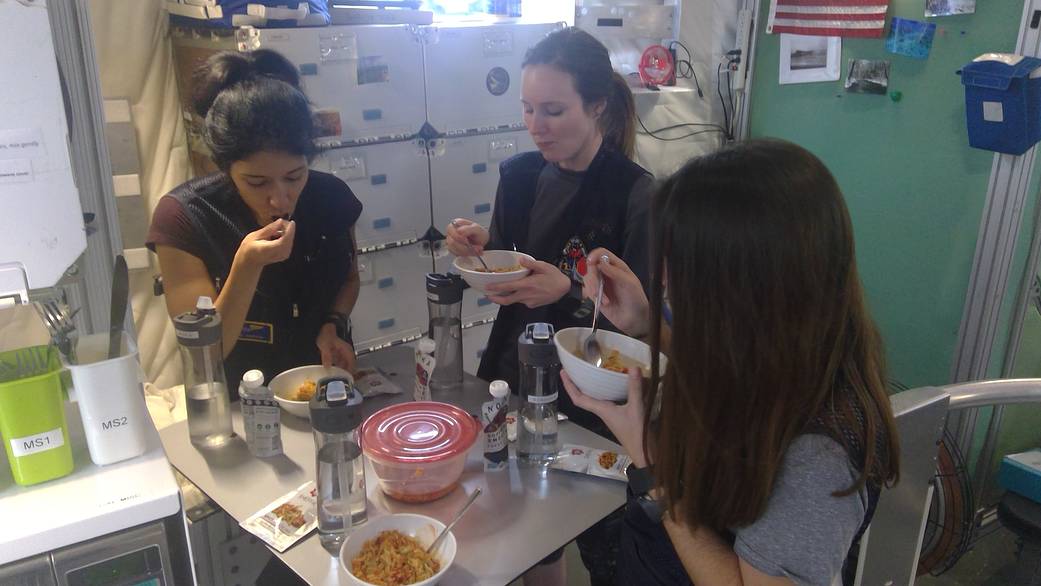From left to right: Monique Garcia, Lauren Cornell, and Madelyne Willis — three members of the Human Exploration Research Analog Campaign 6 Mission 1 crew — gather around a small table to eat their lunch.
Known as HERA, the analog housed four crew members for its first mission of Campaign 6. These crew members began their mission on Oct. 1, 2021, simulating the long trek to Mars’ moon Phobos. Similar to other HERA missions, once the habitat’s doors closed, the crew stayed inside for 45 days until the mission ended on Nov. 15, 2021. Three additional missions are following as part of the campaign, including one that began on Jan. 28, 2022 and will end March 14.
HERA is equipped with four bunks, a work area, an exercise area, a small kitchen with a dining table, a hygiene area, and an airlock. Meals are comparable to what you’d take camping: shelf-stable pouches of tuna and chicken, dehydrated vegetables and fruit. Breakfast includes pancake, oatmeal, and muffin cups that can be reconstituted with hot water.
Like in a reality show, the volunteers inside the HERA facility are filmed throughout the day for the duration of their stay. But instead of entertainment, this project has one very serious goal: to use exploration scenarios to develop strategies for keeping humans healthy, productive, and safe for long-duration missions to the Moon and Mars.
Got a question for future HERA crew members? Ask them through our new Groundlinks program!
Image Credit: NASA
____
NASA’s Human Research Program, or HRP, pursues the best methods and technologies to support safe, productive human space travel. Through science conducted in laboratories, ground-based analogs, and the International Space Station, HRP scrutinizes how spaceflight affects human bodies and behaviors. Such research drives HRP’s quest to innovate ways that keep astronauts healthy and mission-ready as space travel expands to the Moon, Mars, and beyond.
Deepthi SrinidhiJennifer TurnerNASA Human Research Program Strategic Communications
























